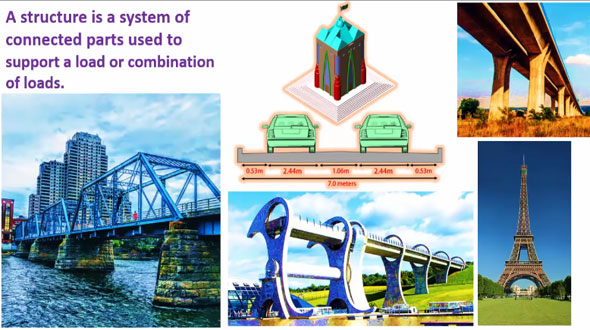Different types of structural members & their functionalities
- Concrete Cost Estimator
- Concrete Continuous Footing
- Landscape Bidding and Estimating
- Construction Cost Estimating
- Concrete and steel cost estimation
- Construction Cost Estimate Breakdown
- Construction Estimating Worksheet
- Home Construction Cost Estimate
- Estimate Pricing Sheet
- Sheet for General Contractor
- Construction Cost Estimate
- Labor Materials Cost Estimator
- Masonry Estimating Sheet
- Sheet for Building Contractor
- Construction Schedule Bar chart
- General Cost Estimator Sheet
- General Construction Estimate
- Building and Road Estimating Sheet
- Detailed expense estimates
- Door and Window Takeoff Sheet
- General Construction Cost Estimating Sheet

This civil engineering article offers good information on several types of structures like beams, columns, tie rods, trusses, pier, steel, surface structures, frames etc. in civil engineering sectors and their functionalities.
Beams – Normally beams are horizontal and straight members to sustain vertical loads. The beams are created to withstand bending moment.
In simply supported beam, both ends are supported by end supports to bear transverse loads. It is also known as determinate beams since they are analyzed with equilibrium equations.
In fixed beam, it is fixed at both ends. This type of beam is indeterminate as it contains moment and post reactions. In this type of beam, there is no rotation like simply supported beam.
In cantilever beam, it is secured at only one end. The beam bears the load to the support where it is forced against with a moment and shear stress. This type of beam is determinate as it contains a fixed end and the reaction becomes moment at support and shear & tension at that support.
In hanging beam, the support is provided from above. It hangs from over. Handing beam sequentially provides support to other beams. This type of beam allows point of contraflexure where bending moment alters at sign.
In continuous beam, there are over two points of support along it’s length. It signifies that this beam contains in excess of one span. The end span of continuous beam can be cantilever. They are fixed supported or may be freely supported. This type of beam is indeterminate beam and it can’t be completely analyzed with equilibrium equations.
Also Read: Major types of loads on building structures
Often, x-section of beam differs along its length and it is called as tapered beam. A tapered beam exposed to a tip bending load will be evaluated so as to anticipate the allocations of stress and displacement in the beam.
The columns are exposed to both axial loads and bending moment.
The columns are categorized as short column and long column.
Short column: In short column, the proportion of its effective length to its minimum dimension becomes less or equal to 12. The short column generally collapses by crushing.
Buckling propensity of short column is less as compared to long columns. Short column bears greater load with regard to long column with equivalent sectional area.
Long column: In long column, the proportion of its effective length to its minimum dimension remains in excess of 12. Long column collapses due to buckling.
Buckling propensity of long column is greater than short column. Loading strength of long column is less with regard to short column of the equivalent sectional area.
To get more details about other structural members, go through the following video tutorial.
Video Source: SL Khan

- Application of concrete calculator
- Roofing Calculator can streamline the roof estimating process
- House construction cost calculator
- Engineering column design excel spreadsheet
- Material Estimating Sheet with Excel
- Materials List and Cost Estimate Worksheet
- Concrete Slab Estimating Calculator Sheet
- Common types of foundations for buildings
- Online calculation of construction materials
- Estimating with Excel for the Small Contractor
- Concrete Beam Design Spreadsheet
- Virtual Construction Management app for construction
- Autodesk’s Project Skyscraper
- Reed Construction’s Reed Insight
- Manage your construction project documentation
- Costimator, the popular cost estimating software
- On Center Software for construction professionals
- Free Construction Estimating Software
- Plumbing Calc Pro
- Cost Estimate Worksheet
- HVAC Piping Quantity Takeoff Worksheet
- Construction Estimating Software Sheet
- Estimate Cost Templates
- Construction Punch List
- Construction cost estimating template consisting estimating basic
- Gantt Chart Template for Excel
- Download Civil Engineering Spreadsheets with Verification
- The Building Advisor Estimating and Budgeting Worksheet
- Spreadsheet for design of concrete bridge
- Construction Estimating Software Free








